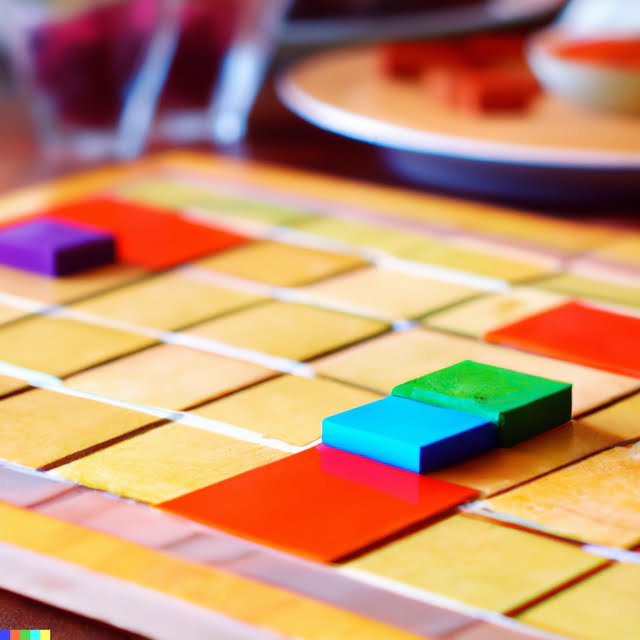Are you looking for a fun and interactive game to entertain your kids? Look no further than the classic Twister game. This timeless board game has been a favorite among children for decades, offering hours of physical and social fun for players of all ages. In this article, we will explore the enduring popularity of Twister and its place among other classic kids board games.
For generations, kids have been drawn to the excitement and challenge of Twister, making it a staple in family game nights and playdates. From its colorful game mat to the unpredictable twists and turns, Twister has captivated the hearts of children worldwide. With its simple rules and endless entertainment value, it’s no wonder why this classic game continues to be a beloved choice for kids of all ages.
In the following sections, we will delve into the history of the Twister game, providing insights into its creation in the 1960s and how it has achieved iconic status today. We will also provide a step-by-step guide on how to play Twister for beginners, along with exploring the physical, social, and cognitive benefits that this classic board game offers for kids.
Additionally, we will cover various ways to play Twister for added fun, as well as tips for hosting a successful game night party centered around this beloved classic. Join us as we celebrate the enduring appeal of Twister and its rightful place among other popular board games for kids.
History of Twister Game
The history of the beloved Twister game dates back to the 1960s when it was first created by Reynolds Guyer and Charles Foley. The game was initially not considered a success, but it gained popularity after being featured on “The Tonight Show” with Johnny Carson in 1966. Since then, Twister has become an iconic game that continues to captivate kids and adults alike.
During its early years, Twister faced some controversy due to its physical nature and the close contact between players. Despite this, the game continued to gain attention and quickly became a staple at social gatherings and family game nights. With its unique combination of physical activity and fun competition, Twister has remained a classic choice for kids board games.
In today’s digital age, Twister’s enduring appeal is a testament to its timeless nature. The game has transcended generations and continues to be enjoyed by children around the world. Its simple yet entertaining concept makes it a favorite among families looking for interactive and engaging ways to spend quality time together.
- 1960s: Twister is created by Reynolds Guyer and Charles Foley
- 1966: Featured on “The Tonight Show” with Johnny Carson
- Enduring appeal: Twister remains popular across generations
How to Play Twister
Twister is a classic kids board game that has been entertaining children and families since its creation in the 1960s. The game, which consists of a plastic mat with colored circles, and a spinner, has become iconic for its unique and interactive gameplay. Played by groups of two or more, the game is known for its ability to challenge players’ agility and flexibility while fostering laughter and fun.
To play Twister, the game mat is spread out on the floor with players standing around it. One player spins the spinner to determine the next move, which will indicate a body part and a color. For example, “right hand on red” would require a player to place their right hand on a red circle on the mat. As the game progresses, players become increasingly tangled up as they try to follow the instructions without falling over.
The physical benefits of playing Twister are numerous, as it requires players to stretch, reach, bend, and balance in different positions. This not only promotes flexibility and coordination but also provides a fun way for kids to engage in physical activity without even realizing it.
Moreover, Twister encourages social interaction as players navigate their way around each other on the mat and can lead to improved cognitive skills such as focus and concentration as they try to follow the spinner’s instructions amidst laughter and excitement. Overall, Twister is an excellent addition to any collection of classic kids board games due to its ability to provide both entertainment and health benefits for children.
| Twister Game Benefits | Details |
|---|---|
| Physical Benefits | Promotes flexibility, coordination, movement |
| Social Benefits | Encourages interaction and teamwork |
| Cognitive Benefits | Improves focus, concentration, problem-solving skills |
Benefits of Playing Twister
Playing Twister offers a wide range of benefits for kids, making it more than just a fun and exciting game. From physical to social and cognitive advantages, this classic game provides a holistic approach to children’s development. Here are some of the key benefits of playing Twister:
- Physical Benefits: Twister requires players to stretch, bend, and balance their bodies in different positions. This not only helps improve flexibility and coordination but also strengthens muscles and enhances overall physical fitness.
- Social Benefits: Playing Twister with friends or family members encourages social interaction and cooperation. It promotes teamwork, as players strategize together to find the best positions on the mat without falling over. This fosters communication skills and teaches children the importance of working together towards a common goal.
- Cognitive Benefits: Twister also offers cognitive benefits by enhancing mental skills such as concentration, quick thinking, and problem-solving. As players try to maintain their balance while following the instructions given by the spinner, they are exercising their brain and improving decision-making abilities.
Moreover, the combination of physical activity and mental stimulation during gameplay can contribute to the overall well-being of children. Additionally, these benefits make Twister an ideal choice for parents looking for an entertaining yet educational activity for their kids.
In comparison with other popular board games for kids such as Candy Land or Chutes and Ladders, Twister stands out as a unique option that combines physical movement with mental engagement. While traditional board games focus on strategic thinking or luck-based gameplay, Twister adds a dynamic element by incorporating physical challenges into the mix.
Therefore, it provides a well-rounded experience that caters to various aspects of child development – making it undeniably one of the classic kids’ board games that continues to capture the interest of young players across generations.
Twister Game Variations
Traditional Twister
The traditional version of Twister involves a plastic mat with colored circles, and a spinner that determines which body part must be placed on which color. As the game progresses, the players become increasingly entangled as they contort their bodies to reach the specified circles, creating a fun and challenging experience for all involved.
Team Twister
For larger groups or parties, Team Twister is a great way to get everyone involved. Players can form teams and take turns spinning the wheel. When it’s their team’s turn, they work together to position themselves on the mat without falling over or touching the mat with an incorrect body part. Team Twister adds an element of collaboration and strategy to the game, making it ideal for group events.
Twister With Props
To add an extra layer of excitement to the game, players can incorporate props such as scarves, hats, or accessories that they must wear while playing. This adds a creative twist to the traditional game and requires players to navigate the mat while balancing additional items on their bodies. It’s a fun way to customize the game and make it even more entertaining for kids and adults alike.
Twister Game Classic Kids Board Games have endured over generations because of its versatility and ability to adapt to different settings and player preferences. These various variations ensure that Twister remains a staple in family game nights, parties, and playdates. Whether sticking to its classic rules or experimenting with new ways to play, Twister continues to bring joy and laughter to players of all ages.
Tips for Hosting a Twister Game Party
Hosting a Twister game party can be a fun and memorable experience for kids and adults alike. Whether it’s a birthday celebration, a sleepover, or just a gathering of friends and family, a Twister party is sure to bring laughter and entertainment. Here are some ideas for hosting a successful and enjoyable game night with Twister.
To set the mood for your Twister game party, consider decorating the playing area with colorful balloons, streamers, and banners. You can also add some music to create a lively atmosphere. Setting up a designated photo booth area with props related to the game can also provide entertainment and opportunities for memorable photos.
In addition to the classic version of Twister, consider incorporating variations of the game to keep things interesting. For example, you can try playing Twister with a twist by adding different challenges or obstacles to make the game more challenging. Another fun idea is to organize a Twister tournament with prizes for the winners.
As for snacks and refreshments, keep things simple with finger foods like mini sandwiches, veggies and dip, popcorn, and fruit skewers. Don’t forget to have plenty of water and beverages on hand to keep everyone hydrated during all the twisting and turning.
| Ideas for Hosting a Twister Game Party | Details |
|---|---|
| Decorations | Use colorful balloons, streamers, banners, and create a photo booth area |
| Variations of the Game | Incorporate different challenges or obstacles; organize a tournament |
| Snacks and Refreshments | Offer finger foods like mini sandwiches, veggies and dip, popcorn; provide plenty of water and beverages |
Twister Game Classic Kids Board Games
When it comes to classic kids board games, Twister is undoubtedly a staple in any collection. However, there are several other popular board games for kids that offer a unique and enjoyable gaming experience. Let’s take a closer look at some of these games and compare them to the timeless appeal of Twister.
Candy Land
Candy Land is a colorful and whimsical board game that has been entertaining kids since its release in 1949. The game is simple and easy to play, making it perfect for young children. Players move their gingerbread pawn along the rainbow path, encountering sweet characters and surprises along the way. While Twister offers physical activity and movement, Candy Land sparks imagination and creativity in young players.
Chutes and Ladders
Chutes and Ladders, also known as Snakes and Ladders in some regions, is another classic kids board game that has stood the test of time. This game is based on sheer luck as players spin a spinner and move their pawns up ladders or down chutes.
Similar to Twister, Chutes and Ladders encourages social interaction as players cheer each other on or commiserate over unfortunate spins. The simplicity of the game makes it accessible to younger kids, providing a different type of entertainment compared to the physical challenges of Twister.
Operation
Operation offers a completely different gaming experience compared to Twister. In this skill-based game, players take turns performing “surgery” by removing pieces from an anatomical patient without touching the sides of the openings. This classic board game promotes hand-eye coordination and fine motor skills, making it an engaging option for kids who enjoy challenges that require precision and focus. While Twister fosters physical activity, Operation focuses on developing dexterity and concentration.
In comparison to these popular board games for kids, Twister stands out with its emphasis on physical movement and balance. Each of these games offers unique benefits and experiences, making them all valuable additions to any family’s collection of classic kids board games.
Conclusion
In conclusion, the Twister game has undoubtedly made its mark as a timeless classic among kids board games. From its humble beginnings in the 1960s to its iconic status today, Twister continues to captivate and entertain children of all ages. Its simple yet engaging gameplay has stood the test of time, making it a popular choice for families and friends looking for a fun and interactive activity.
The physical, social, and cognitive benefits of playing Twister should not be overlooked. Not only does the game promote physical activity and flexibility, but it also encourages social interaction and cooperation among players. Additionally, the game requires strategic thinking and quick decision-making, providing cognitive benefits for children as they navigate through the colorful mat.
As we celebrate the enduring popularity of Twister, it’s important to recognize its place among other classic kids board games. While there are many beloved games out there, few can match the unique appeal and lasting impact of Twister.
Its ability to bring laughter, excitement, and memorable moments to any gathering makes it an essential addition to every family’s collection of board games. Whether it’s a rainy day at home or a lively game night with friends, Twister is sure to continue bringing joy and entertainment to children for generations to come.
Frequently Asked Questions
Is There a Kids Version of Twister?
Yes, there is a kids version of Twister available. It is designed with smaller and easier-to-reach dots compared to the original version, making it more suitable for children to play.
What Was the Old Name for the Game Twister?
The old name for the game Twister was “Pretzel.” It was initially developed and marketed under this name but was later changed to its current title, “Twister,” which better reflects the game’s physical nature.
What Age Is Twister Game Appropriate For?
The Twister game is generally appropriate for children ages six and up. However, adult supervision may still be necessary for younger children to ensure they understand the rules and to prevent any accidents during play.

I love playing all kinds of games – from classics like Monopoly to modern favourites like Ticket to Ride.
I created this blog as a way to share my love of board games with others, and provide information on the latest releases and news in the industry.





